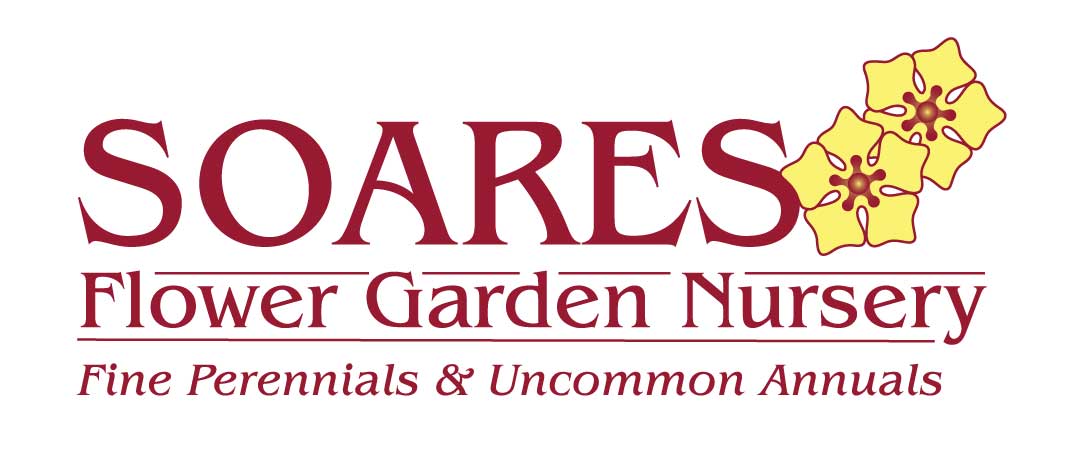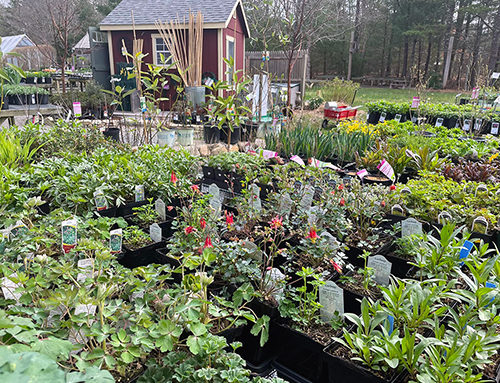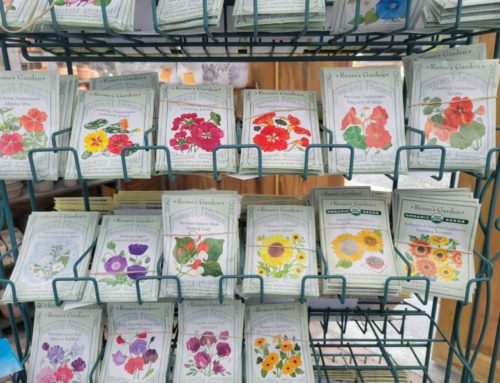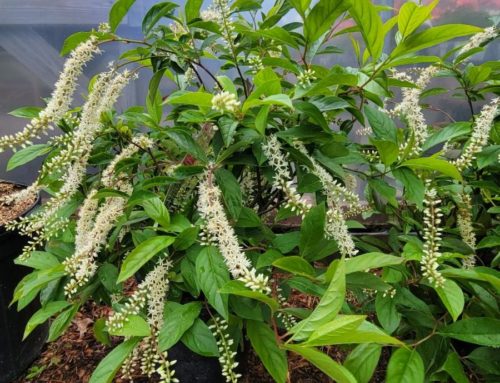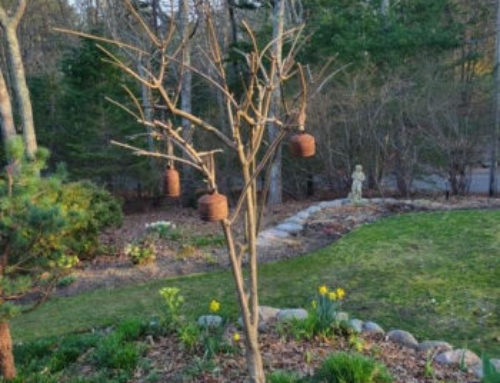Freezing temperatures in the forecast?
Sometimes visitors look around the nursery full of plants and wonder aloud what we do when temps are forecast to dip below freezing. Decades of experience has given us experience, knowledge and strategies. Not that a miscalculation by a meteorologist hasn’t burned us occasionally. Or our own overconfidence. We take good care of the plants so they are their best for you.
Plants vary widely in their tolerance of frost, freezing and low temperatures. We know that the pansies, hellebores and kale can freeze solid and be fine when they thaw out. We know that the nemesia (pink, pictured above) can be fine at 32F, maybe not at 28F. Coleus, peppers and basil suffer in the 50s, they’re tropical.
So yes, we cover some with spun polyester row cover or load up our big carts and move most tender plants into greenhouses for the night. How long plants have been on site getting toughened up by our stern horticulturists and New England weather figures into our decisions. When we can, we leave plants out overnight as much as possible to “harden off”. Mollycoddling them too much keeps them vulnerable to wind, sun and frost.
Ask us whenever you wonder if plants we offer can be outdoors full time. Before long we’ll be in our “if we have it outdoors, you can too” phase. Not quite yet without disclaimers. As explained, there are variables to consider. We also expect you to be a frequent weather watcher too. Ten day forecasts of “safe” night temperatures have a habit of changing.
Above 32F most all the plants we offer are ok to plant if you are willing to sprint out at sundown with an old sheet (not plastic) to cover the tender ones if the temperatures are predicted to dip unexpectedly. 28-32F is tolerated by pansies & violas, hardy perennials and bulb plants. And gardeners. Though we prefer it warmer too.
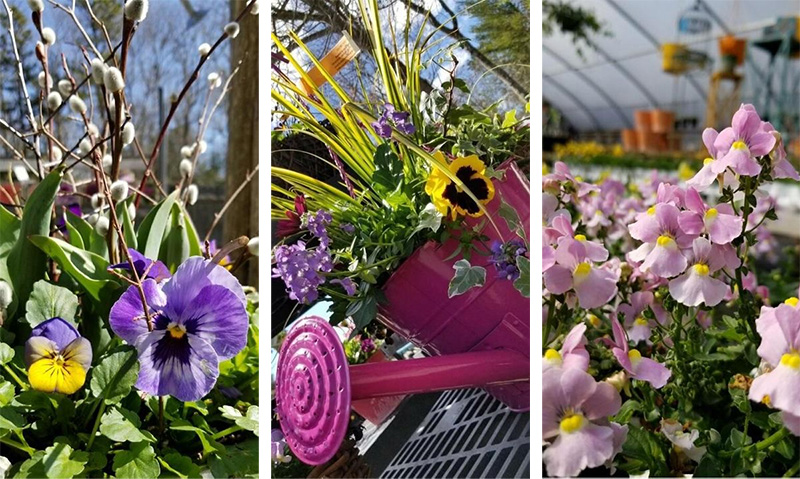
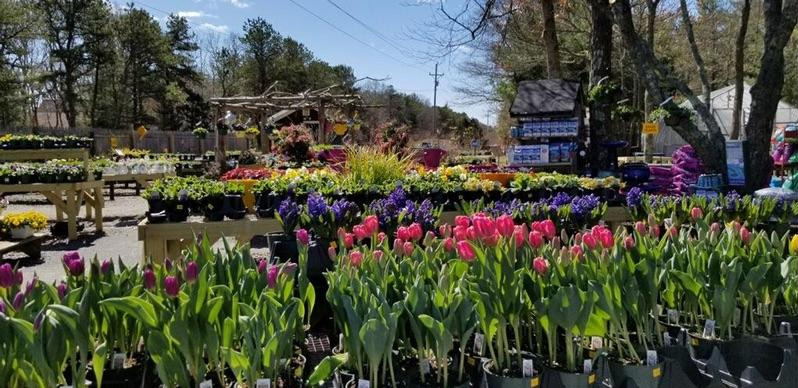
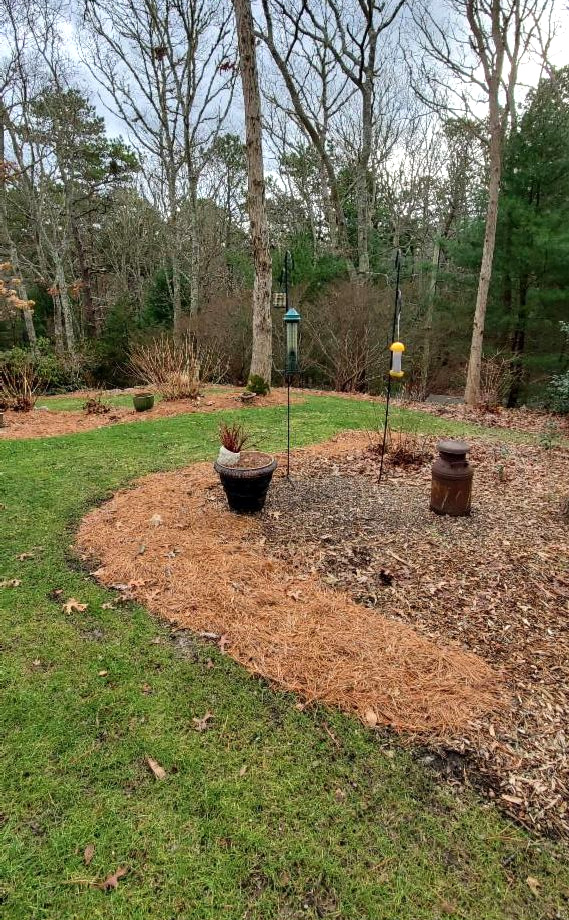
Tips From Terry
This spring as I dive into garden bed clean-ups, I am mindful of our pollinator friends and the trend to not clean everything out of the beds. Leaving leaves as a natural mulch and stems from last year’s perennials provides habitat for so many of our pollinators. That being said, how to balance being a good pollinator friend with keeping the garden looking tidy is a quandary, especially for those of us that are control enthusiasts in our gardens. I think I have found a compromise that works to keep me and our pollinator friends happy. Last fall, the only perennials I cut back were those along the first 3 feet of my flower borders. I raked out heavy pockets of leaves from the front 3 feet and used pine needles as a ribbon of mulch along all the beds. If they were small island beds, I used pine needles throughout the whole bed. The result: neat looking beds in front and natural leaf cover left for the pollinators. Don’t have access to pine needles? I would use leaves ground up with a lawn mower and use that for mulch along the front of the border. I like the results – neat looking beds that are pollinator friendly.
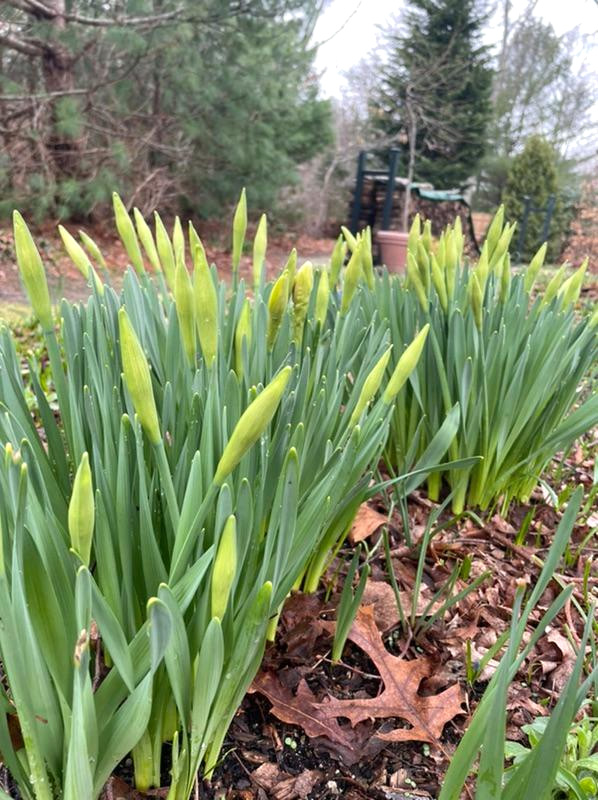
These old, vigorous daffodils have benefited from application of dry, organic fertilizer like PlantTone or BulbTone. Ideally, scratch some in as shoots emerge and again as leaves die down. Rejuvenate your older bulbs with food. Dividing overcrowded ones often works too. Deep shade is harder to conquer.
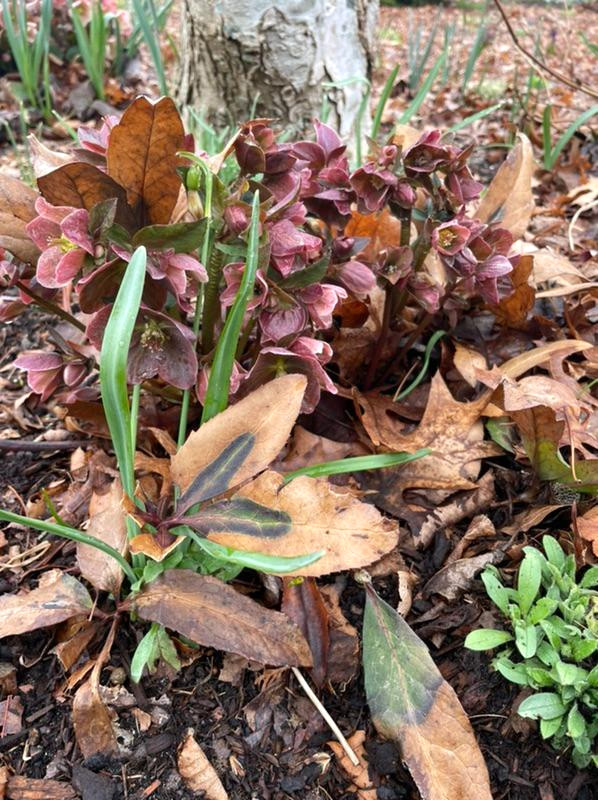
Hidden hellebore beauty behind last year’s tattered foliage and accumulated oak leaves. A small amount of clipping of old leaves and pulling away of brown leaves = pretty & visible early spring blooms beloved by bees too. Frostkiss hellebores have lovely marbled leaves.


